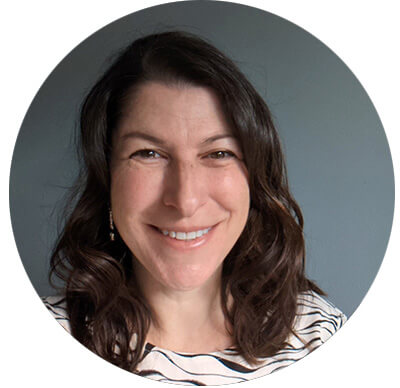The world moves fast – especially in public relations.
Social media, influencer marketing, and the 24/7 news cycle have completely transformed how we communicate with our audiences. A press release used to cover most of the bases, but those days are long gone. Now, you’re juggling multiple channels, creating unique narratives, targeting your media outreach, and trying to stay one step ahead of the next viral moment.
The good news? With the right strategy in place, you can navigate anything that comes your way.
Whether you’re taking a fresh look at your current strategy, or creating one from scratch, this step-by-step guide will help you develop a PR strategy that focuses on what matters most to deliver real results.
What is a PR Strategy (And Why Does It Matter)?
Before we jump into the nitty-gritty, let's cover the basics. A PR strategy isn’t just a campaign or pitch – it's your comprehensive roadmap for managing public perception of your brand. It's the plan that guides all your communications efforts and helps you achieve your business goals.
Why is an effective public relations strategy so important? Because it:
- Builds and protects your reputation
- Boosts brand awareness
- Enhances credibility
- Supports marketing and sales efforts
- Helps you navigate crises
- Fosters better relationships with stakeholders
- Sets you apart from the competition
- Attracts potential investors
Without a solid strategy, you’re just throwing spaghetti at the wall and hoping something sticks. Although playing with your food can be entertaining, it’s hardly an effective PR strategy. A good PR plan gives you direction and purpose, ensuring that every press release, social media post, and media interview serves a larger goal.
Building Your Public Relations Strategy
So, let’s break down the process of creating your strategy, step by step.
Step 1: Do Your Research
Before you start mapping out your plan, there’s a bit of homework to complete.
Understand Your Brand
First things first: you need to know your brand inside and out. This research gives you a clear picture of where you stand and where you want to go. Here are the key areas you’ll want to look at:
- Brand Positioning: Where do you want your brand to sit in the market? Are you the innovative disruptor? The reliable industry veteran?
- Brand Sentiment: Use social listening tools to gauge how people feel about your brand. Are people generally positive, negative, or neutral when talking about you?
- Communications Audit: Is your website and newsroom up to date? Is your brand voice consistent across all channels?
- Competitor Analysis: What are your competitors doing well (and not so well) in their PR efforts? This can help you spot gaps to fill in your own strategy and ways to stand out.
- Customer Insights: Use surveys, focus groups, social media listening, and internal feedback from sales and customer support to understand what your customers think about your brand.
- Media Coverage: What kind of press have you received in the past? Was it mostly positive or negative? Who did you pitch to?
- SWOT Analysis: Identify your strengths, weaknesses, opportunities, and threats. For example, a strength might be your industry-leading product line, while a weakness could be low brand recognition in certain markets.
Using media monitoring and social listening tools can help you make short work of this analysis. These comprehensive tools can not only tell you where you currently stand regarding things like brand sentiment, share of voice, and media coverage, many will show historical trends - and these tools will be important to measure the effectiveness and impact of your upcoming efforts.
Know Your Audience
Your PR strategy won't work if you don't know who you're talking to. Understanding your audience helps you tailor your messages and choose the right channels to reach them. Many organizations create audience personas to help make their stakeholder groups feel more tangible.
To deeply understand your audience, look at factors like:
- Demographics: Use customer databases, market research reports, website and social media analytics to gather data on gender, age, education level, and location.
- Information Sources: Identify where your audience gets their information through surveys, social media listening, and media consumption research from organizations such as Nielsen (e.g., news outlets, blogs, podcasts, social platforms).
- Search Behavior: Analyze search trends and patterns to understand how your audience looks for information. Look for this information within website analytics, SEO platforms, and industry reports.
- Influencers and Thought Leaders: Identify key opinion leaders that your audience trusts through social media analysis and influencer marketing platforms.
- Pain Points and Challenges: Gather insights from customer support tickets, sales team feedback, product testimonials, customer surveys, and online reviews.
- Goals and Aspirations: Conduct focus groups, in-depth interviews, and analyze social media conversations to understand what motivates your audience.
- Interests, Lifestyle, Values: Build a more complete picture of your audience and what they care about with social listening tools and third-party intelligence from organizations such as Pew Research Center.
Step 2: Set Your PR Goals and Objectives
Now that you've done your research, you can set challenging, but realistic goals that directly tie back to overall business objectives. It’s a good idea to team up with other departments to make sure everyone's on the same page and there’s alignment across your goals.
When setting objectives, the key is having quantifiable goals with clear deadlines. Many organizations use the SMART framework – specific, measurable, achievable, relevant, time-bound. For example:
- Establish the CEO as a thought leader with at least three speaking spots at major conferences within the next six months
- Increase positive sentiment on social media from 60% to 75% by year-end
- Place bylined articles in two top industry publications within the next quarter
- Boost website traffic from PR activities by 30% in the next six months
Step 3: Craft Your Brand Story
With your goals in place, you can develop a core brand narrative and tailored key messages for different audiences.
This is one of the most important elements in your PR plan, but it’s also one of the most difficult. Only 33% of comms leaders feel confident in telling a compelling brand story (2024 Global Comms Report).
When developing your brand narrative, use your research from the first step and think about:
- Your brand's origin story
- Your mission and values
- What makes you unique in the market
- The problem you're solving for your customers
This narrative should be the foundation for all your communications, helping to create a cohesive brand image across all touchpoints. This is another area where collaboration with your colleagues in other departments is essential. To support this cohesion, consider taking your narrative one step further with a message hierarchy:
- Primary message: The one thing you want everyone to know about your brand
- Secondary messages: Supporting points that add depth to your primary message
- Proof points: Specific examples, stats, or stories that back up your messages
These deeper, specific messages can help other teams stay more consistent with the core brand story, while leaving room to customize for various campaigns and purposes.
Step 4: Choose the Right PR Channels and Tactics
Next in the process is determining the best way to get your message out there. Choose tactics that align with your goals and effectively reach your target audience.
Traditional Media Relations
Traditional media outlets still hold significant power in shaping public opinion. Build relationships with key journalists in your industry. Provide them with valuable, newsworthy information through press releases and pitching to earn coverage for your brand. (Get the details on what journalists want from their PR partners in our 2024 State of the Media Report.)
Digital and Social Media Strategies
Your online presence is crucial. Take steps to optimize your website for search engines, create a content strategy for your blog, and engage with your audience on social media platforms. Just be sure your approach makes sense for each social platform. Multimedia assets like graphics, videos, and photos will be essential to these strategies.
Content Marketing and Thought Leadership
Position your brand as an industry leader by creating valuable, informative content. This may take the form of:
- Whitepapers and e-books
- Webinars
- Podcasts
- Guest articles in industry publications
- Educational blog posts on your website
Events and Speaking Engagements
Participating in or hosting events can be a powerful way to connect with your audience and build credibility. Look for opportunities to speak at industry conferences or host your own events to highlight your expertise.
Influencer Partnerships
Collaborating with influencers can help you reach new audiences and add credibility to your brand. Choose influencers whose values align with your brand and who have genuine influence over your target audience.
Award Submissions
Industry awards provide a platform for nominees and winners to showcase their work, garner recognition from industry leaders and peers, and elevate their brand's reputation.
Step: 5 Plan and Execute
This step is all about developing your action plan – what you’ll actually be doing for the next several months. Again, collaborating with other teams (marketing, social, web, advertising, internal communications, etc.) can help. Although your focuses may differ, you’re all working toward the same end goals for the organization.
Create a PR Content Calendar
Map out your planned PR content calendar for the coming months. This might include:
- Press release schedules
- Social media content themes
- Planned events or speaking engagements
- Content creation and publication dates
- Award submission deadlines
Allocate Resources
Consider both financial and human resources. Do you have the in-house expertise to execute your strategy, or do you need to bring in external support? Understanding what’s feasible is critical so you can create a strategy that is actually realistic.
Crisis Communication Planning
No PR strategy is complete without addressing crisis communications. Incorporate crisis preparation and prevention into your overarching public relations plan by:
- Identifying potential crisis scenarios
- Designating members of your crisis team with clear roles and responsibilities
- Establishing clear communication channels
- Developing response protocols
- Training spokespersons
- Incorporating crisis-related queries and alerts into your media and social monitoring
Step 6: Measurement and Evaluation
You can't improve what you don't measure. And you can’t show the value of PR without measuring the metrics that matter. Not to say it’s easy: Measuring impact effectively is still a major challenge for half of communications leaders worldwide (2024 Global Comms Report). But there are many ways to successfully track and demonstrate how you’ve moved the needle.
It starts with choosing key performance indicators (KPIs) that align with your objectives and ladder up to organizational goals. These might include:
- Media mentions (both quantity and quality)
- Share of voice compared to competitors
- Website traffic from PR activities
- Social media engagement
- Lead generation from PR efforts
- Brand sentiment
This is where those media monitoring and social listening tools like CisionOne really come into play. Regularly analyze your results and be ready to adjust your strategy as needed. Don't be afraid to admit when something isn't working. PR is often about experimentation and learning.
For details on how to measure PR performance and what metrics are the most critical, download our 7 Essential PR Metrics to Prove Impact tip sheet.

Wrapping It Up
The best PR strategies are those that evolve with your business and your audience. They're rooted in a deep understanding of your brand, your audience, and your goals. They leverage the right mix of tactics and channels to reach and engage your stakeholders, and they're constantly evaluated and refined based on the results.
Find out how CisionOne can streamline your efforts and strengthen your strategy. Talk to us.








